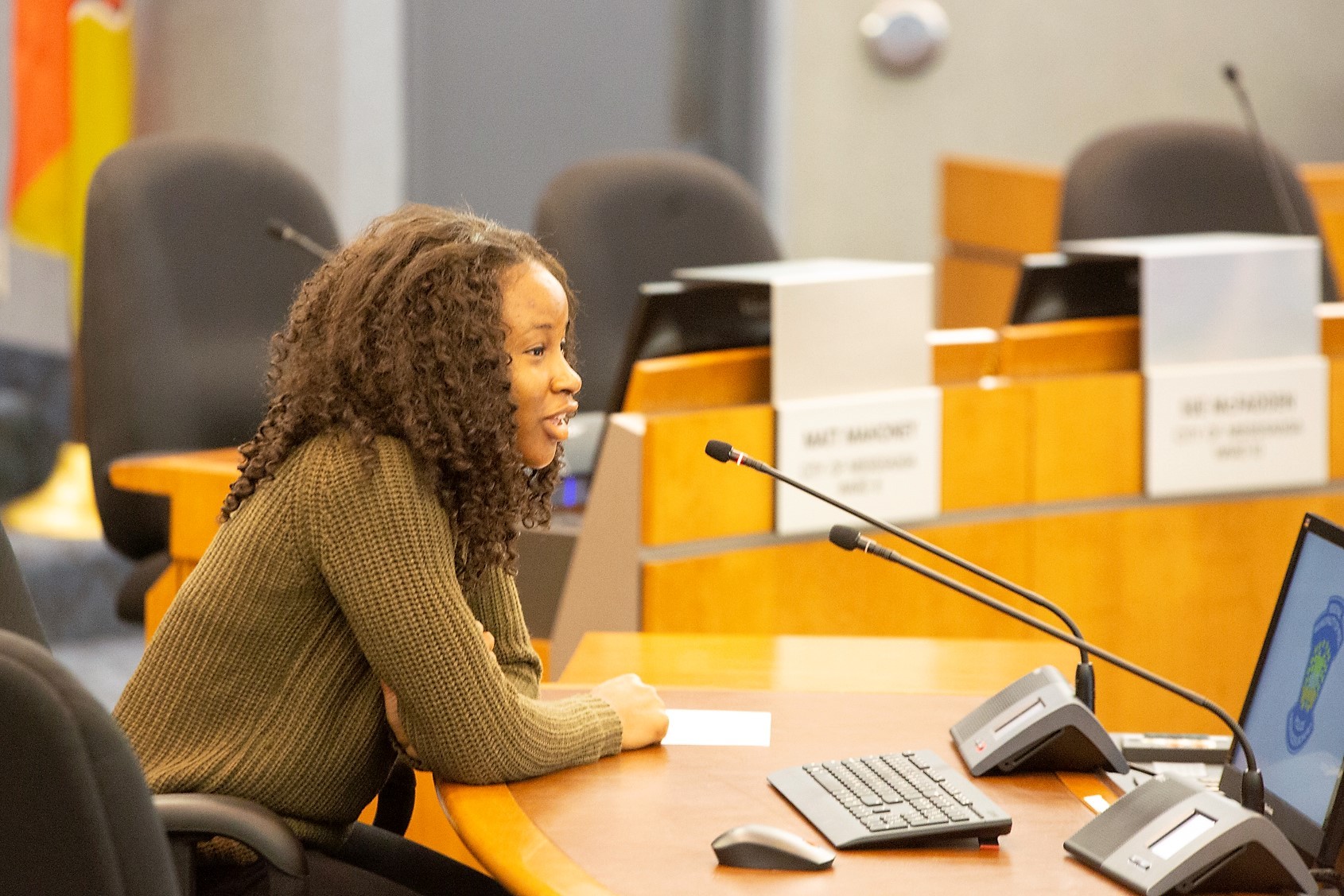
Confronting crime before it ever happens
The root causes of crime among youth will not only be the focus of Peel’s incoming police chief; regional council is also making it a priority. The idea is to stop certain crimes from ever happening.
The strategy to do this has come into sharper focus, as the Region of Peel has prioritized specific parts of its community safety and wellbeing plan that emphasize addressing the root causes of crime among youth.

Peel police has already initiated a number of programs to work with youth
The update was presented to Brampton councillors during last week’s community safety advisory committee meeting, months after the process was initiated to create the plan.
The new information provides more context to what has previously been a vague idea for a provincially-mandated document with the goal of making Peel Region a “sustainable community where everyone is safe” and “where individuals and families can meet their needs for education, health care, food, housing, income, and social and cultural expression,” according to a staff presentation.
The previous Liberal government under Kathleen Wynne directed all municipalities to create a clear and comprehensive plan to address community safety and wellbeing, but up till now, Peel’s has not been properly formulated.
With the rise in violent crime across Brampton, where the violent crime severity index, a measurement of the rate of the most serious crimes such as homicides, is worsening three times faster than the national rate over the past five years, many residents have become alarmed by the brazen criminal conduct taking place.
It was a major issue in last year’s municipal election.
Reducing youth violence and addressing the root causes of what leads Peel’s younger populations into a life of crime have been listed as an “outcome of interest” for the required regional plan, which must be completed before the start of 2021 according to the provincial legislation.
“The work of the plan will really be to identify how can we enhance what we’re already doing. How can this plan be an add-on, to the great work that’s already happening at both levels of government here in Peel,” Kate Bingham, an associate medical officer of health for the region, told councillors during a presentation earlier this year. “Identifying strategies that comprehensively address those root causes of these issues are needed to sustain and enhance a positive social and economic trajectory for our community.”
Addressing youth crime has been a focus for the Peel Regional Police for years, with such programs as the organization’s Youth in Policing Initiative and the Peel Police Youth Initiative, aimed at introducing youth to policing in different ways. There is also the School Resource Officer program which places Peel police officers in local schools with the goal of facilitating better relationships with the region’s young people.

A Brampton Sheridan College student addresses the Peel police board about the need for officers to build trust with young people
Despite these initiatives, young people continue to make up a disproportionate number of the people being charged on an annual basis in Peel. While youth only represent 7.7 percent of the Peel policing population, they accounted for 11.5 percent of those charged in 2018, a meagre half a percentage point drop from 2017, a result of 80 less youth overall being charged, according to data from the Peel Regional Police.
Additionally, the crime rate among youth, 1,412 incidents per 100,000 in Peel is higher than the provincial average of 1,391.
More troubling is the growing rate of violent crimes perpetrated by youth. Crimes against persons committed by youth in Peel increased from 861 incidents in 2017 to 930 last year, a 9 percent increase.
It is not surprising that Peel Region is placing a stronger focus on addressing the root causes of these numbers, as it’s an issue that could get considerably worse if not addressed in the years ahead.
Census data suggests the numbers may only continue to rise if more resources are not put toward intervention programs to keep youth away from criminal circles. The lack of affordable housing in Brampton and recreational facilities, as the city’s population continues to balloon, and other social factors that can push young people to a life of crime, have long been cited by professionals in the social service sector as areas that need to be addressed.
The region, including Caledon, has the highest percentage of those aged 0-14 in the Greater Toronto Area. Both Brampton and Mississauga are home to approximately 120,000 kids within this age group, meaning that in the years to come, Peel police will continue to have a large proportion of their population falling into this “youth” category, aged 12-17.
The presentation provided to councillors last Wednesday lists a number of factors as roots for youth violence, including deep-seated issues like poverty, racism, and health determinants, to more tangible elements like community design, issues in the education system, family issues and lack of economic opportunities for young people.
According to documents from the region of Peel, staffing and consultation costs to develop the plan will be approximately $1.6 million in 2019 and $1.7 million in 2020. Interestingly, this spending and planning could be for naught if the Region of Peel were to be dissolved following the results of the regional government review currently being undertaken by the province.
Should the province decide to grant Mississauga its wish and allow it to become its own municipality, provincial legislation would dictate that both the municipalities of Brampton and Mississauga, should they become single-tier cities, create community safety plans of their own. This would require a new plan, individual funding and a new set of priorities to focus on.
However, should the region remain as is, having a plan that places youth crime at the forefront would be a feather in its cap in while reaching out to other levels of government for funding, something that is much needed, with local budgets already stretched to their limit.
Funding has not kept pace with the growing young population, or the booming population growth in general across Brampton and Mississauga. These two cities now account for approximately 1.4 million people under the jurisdiction of the Peel police. Currently, there are approximately 138 police officers for every 100,000 residents in the two cities, much lower than the national average which hovers around 188 officers per 100,000.

Despite that, a funding program to address the very priorities pointed to for the community safety plan, was denied by the federal government last year.
In the summer of 2018, Peel police applied for $3.72 million through the Liberal’s National Crime Prevention Strategy (NCPS) to support a three-year initiative aimed at reducing youth violence in Peel following a 25.3 percent increase in these crimes among youth between 2015 and 2016. The figures have only continued to rise, increasing steadily by nearly 10 percent the last two years.
According to the NCPS website, the strategy and approved projects are geared toward “crime prevention interventions” and “providing funding to strategically selected projects that contribute to preventing and reducing crime in Canada and to increasing knowledge about what works in crime prevention.”
An evaluation of the NCPS completed for the 2017/18 funding year highlights the strategy’s focus on stopping crime before it happens, especially among the country’s younger population.
It’s unclear why the application was denied, and Brampton’s MPs did not comment on the matter, despite writing a joint letter, along with Mississauga MPs, in support of the application.
The eventual approval of a plan that looks to create a more proactive approach to addressing crime will mark a shift in the region’s reactive thinking of the past when addressing issues of crime.
In September 2018, regional council approved additional resources to place more police on the street to address the problem of rising violence. However, experts and stakeholders have repeatedly pointed to approaches that address the social factors that lead to crime as opposed to more police officers on the ground as an effective way to combat crime in the long term.
It’s an approach that is supported by Peel’s incoming police chief Nishan Duraiappah, who says crime prevention, in a long-term, or “upstream” way, has to be the focus of all groups working in the community to create a safer environment with plenty of productive options for youth.

Halton Deputy Chief Nishan Duraiappah will become Peel's new police chief in October
“There has got to be a new way of doing things otherwise it’ll be the age old approach to gang violence, one at a time, one at a time,” he told The Pointer. “(It) has to be responded to in a more upstream approach. We have a role in that, and I think it’s now a matter of mobilizing the other key components and stakeholders to do it with us.”
The benefits of such a plan for Peel region are clear on both the social and community front. However, the outcomes could also result in savings for the region’s pocketbook as well.
According to data from the region, dollars spent on public health initiatives for social development, especially those aimed at youth, yielded more than five-times the cost savings for the health system. Further studies have shown that for every $1 spent on programs geared at youth crime prevention and those that promote positive social development, $25 are put back into the local economy.
Email: [email protected]
Twitter: @JoeljWittnebel
Submit a correction about this story


